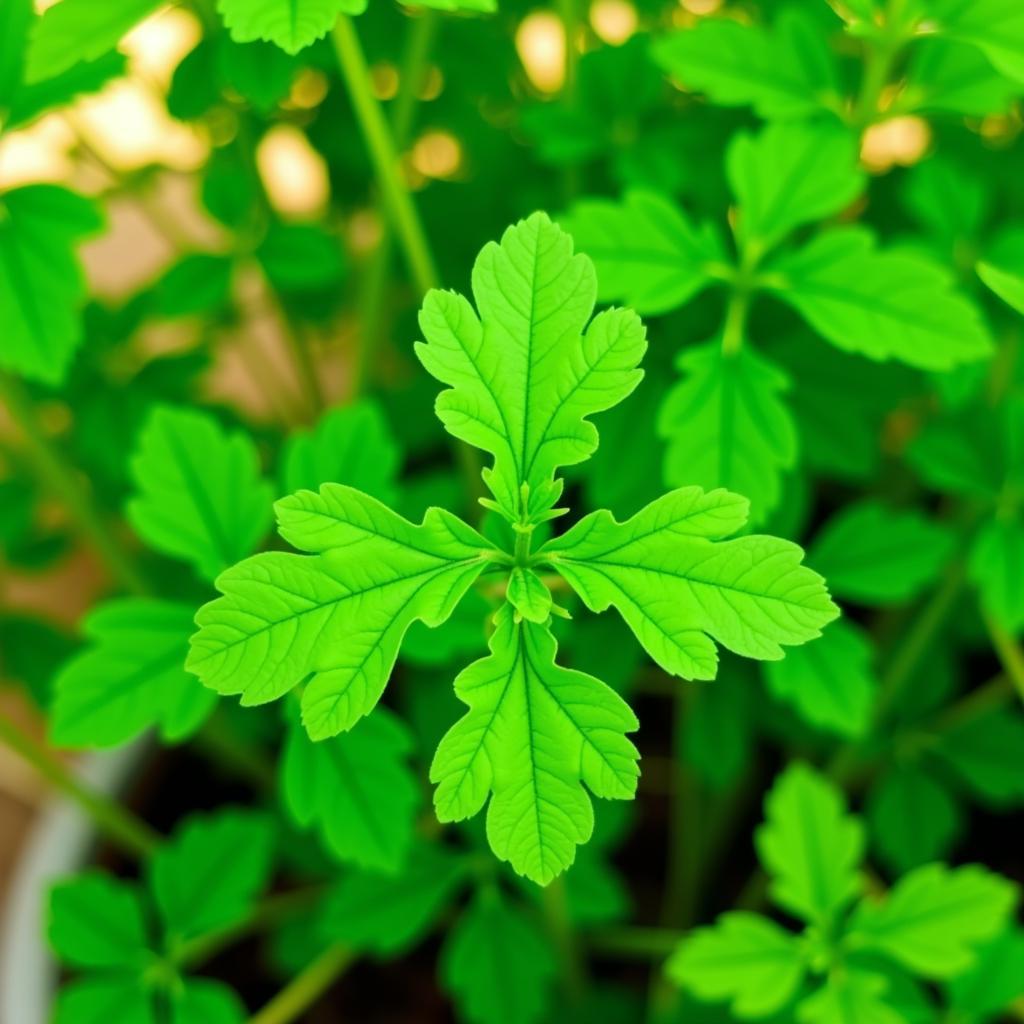Exploring the Aromatic World of African Coriander
African coriander, also known as culantro or recao, bursts with a pungent, cilantro-like aroma that elevates countless dishes across the African continent and beyond. This aromatic herb plays a vital role in diverse cuisines, adding a distinct flavor that captivates palates with its unique herbaceousness. From stews and soups to salsas and sauces, African coriander contributes a vibrant touch that makes it a beloved ingredient in kitchens around the globe.
Understanding African Coriander: More Than Just a Herb
African coriander, despite its name, isn’t actually a true coriander. It’s a separate species ( Eryngium foetidum) belonging to the Apiaceae family, related to carrots, parsley, and celery.  Close-up of an African coriander plant While it shares a similar aroma with cilantro, African coriander boasts a more intense, almost musky fragrance and a slightly bitter taste. This unique characteristic makes it a popular choice in various culinary traditions, particularly in the Caribbean, South America, and Southeast Asia, in addition to its prominent use in African cooking.
Close-up of an African coriander plant While it shares a similar aroma with cilantro, African coriander boasts a more intense, almost musky fragrance and a slightly bitter taste. This unique characteristic makes it a popular choice in various culinary traditions, particularly in the Caribbean, South America, and Southeast Asia, in addition to its prominent use in African cooking.
Culinary Uses of African Coriander across Africa
African coriander finds its way into a myriad of dishes, contributing its distinct flavor to various culinary creations. In West Africa, it’s a staple in hearty stews and soups, adding a depth of flavor that complements the richness of meats and vegetables. In East Africa, it’s often used as a garnish, lending its bright aroma to grilled meats and seafood. Across the continent, it’s a key component in sauces and salsas, adding a herbaceous note that enhances the overall taste profile.
Regional Variations in African Coriander Use
The use of African coriander varies regionally, reflecting the diverse culinary landscapes of Africa. For instance, in Nigeria, it’s an essential ingredient in pepper soup, a spicy and aromatic dish often served as an appetizer or light meal. In Tanzania, it’s commonly used in mchuzi wa samaki, a coconut-based fish stew, where its flavor blends beautifully with the richness of the coconut milk and the delicate flavor of the fish. These regional variations demonstrate the versatility of African coriander and its ability to complement a wide range of flavors.
Growing and Cultivating African Coriander
African coriander is a relatively easy herb to grow, thriving in warm, humid climates. It prefers well-drained soil and partial shade, making it a suitable choice for both gardens and containers. The plant grows quickly and can be harvested within a few weeks of planting. Once established, it can be a prolific producer, providing a continuous supply of fresh leaves for culinary use.
Tips for Successful African Coriander Cultivation
For optimal growth, ensure consistent moisture and provide adequate nutrients. Regular pruning encourages bushier growth and a more abundant harvest. Harvesting the leaves regularly will prevent the plant from bolting and going to seed prematurely, ensuring a continuous supply of fresh, flavorful leaves.
“African coriander is an incredibly versatile herb,” says Dr. Abena Osei, an ethnobotanist specializing in African culinary herbs. “Its unique aroma and flavor profile make it a valuable ingredient in so many dishes, reflecting the diverse culinary heritage of the continent.”
Beyond the Kitchen: Traditional Uses of African Coriander
Beyond its culinary applications, African coriander holds cultural and medicinal significance in many African communities. It’s traditionally used to treat various ailments, including fever, colds, and digestive issues. “In Ghana,” adds Dr. Kofi Asante, a traditional healer, “African coriander is often used as a natural remedy for stomach aches and indigestion.” Its versatility extends beyond the kitchen, highlighting its importance in traditional medicine and local customs.
Conclusion: Embrace the Flavors of African Coriander
African coriander, with its pungent aroma and unique flavor, is a culinary gem that deserves a place in every kitchen. From enriching traditional African dishes to adding a vibrant touch to modern culinary creations, this versatile herb offers a world of culinary possibilities. So, next time you’re looking for a way to elevate your cooking, consider incorporating African coriander and experience the rich tapestry of flavors it brings to the table.
FAQ: Your Questions about African Coriander Answered
- What is the difference between African coriander and cilantro?
- How do I store African coriander?
- Can I substitute cilantro for African coriander?
- What are the health benefits of African coriander?
- Where can I buy African coriander?
- How do I use African coriander in cooking?
- How do I grow African coriander from seed?
Common Scenarios and Questions about African Coriander
-
Scenario: You’re making a Caribbean-inspired dish and the recipe calls for culantro.
-
Question: Can you substitute African coriander for culantro? (Yes, they are the same herb.)
-
Scenario: You’re trying to replicate the flavors of a West African stew.
-
Question: Where can I find African coriander near me? (Check local ethnic grocery stores or farmer’s markets.)
Related Articles and Further Exploration
- Exploring the Spices of West Africa
- Growing Herbs in Your Home Garden
- The Medicinal Properties of African Plants
When you need assistance, please contact us at Phone Number: +255768904061, Email: kaka.mag@gmail.com Or visit us at: Mbarali DC Mawindi, Kangaga, Tanzania. We have a 24/7 customer service team.

